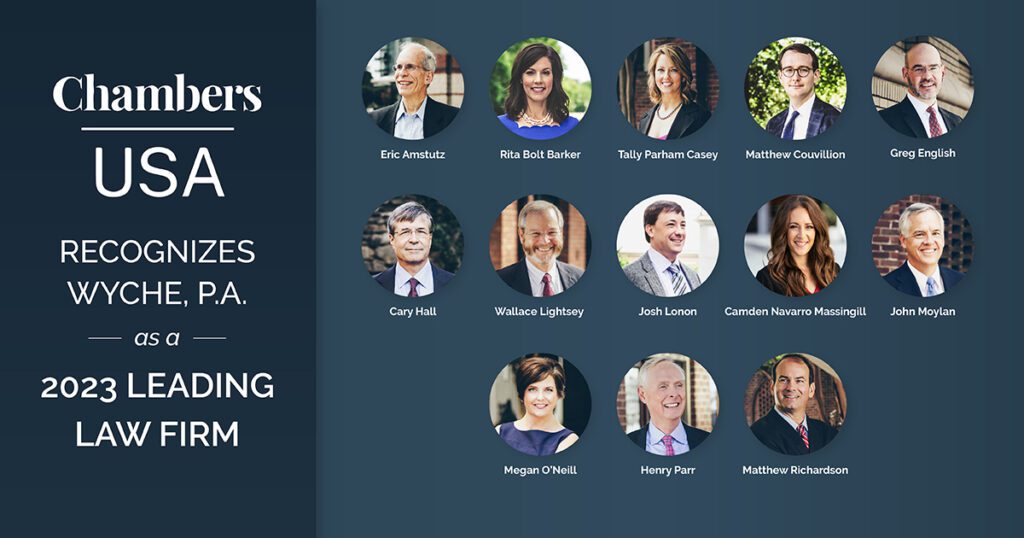Written by Wallace K. Lightsey and Josh Weiss
As seen in South Carolina Lawyers Weekly
March 11, 2011
“It”s fun to stay at the Y-M-C-A . . . ” As the theme of the song goes, the YMCA has been recognized and has become a leader in youth and adult recreation. The YMCA, a globally recognized nonprofit, has a presence in over 3,000 communities. According to a 2009 study, the brand value of those four letters is over $6 billion and will only to continue to grow as time goes on.
Nonprofit organizations are an integral part of South Carolina’s and the nation’s economy. Numerous charities, fundraisers, political groups, sororities, and fraternities are heavily involved in our local communities and have a nation-wide impact for their respective causes. These organizations promote goodwill and philanthropic ideals as well as support altruistic causes through their presence in the public arena. But how can these groups protect the goodwill that they strive so arduously to achieve? Trademark protection is an essential aspect of any nonprofit; trademark law does not differentiate between for-profit and nonprofit organizations. Trademark registration is only the first step in protecting your organization”s brand. There are many benefits associated with being placed on the principal register of the United States Patent and Trademark Office (PTO) as compared to common law or state trademark law protection.
WHAT IS A TRADEMARK?
A trademark can be a word, phrase, or logo that a business uses to identify itself to the public. Trademarks are used on goods and products, whereas service marks are used for identifying certain services. By creating a trademark, nonprofits have an opportunity to build name brand recognition and have a “bundle of rights” associated with the trademark. Upstate Forever, a nonprofit organization dedicated to protecting and conserving the Upstate South Carolina area’s land and natural resources, became the first land trust program in South Carolina to receive national accreditation. Registered in 2002, Upstate Forever’s trademark name immediately invokes its purpose into the minds of its readers and supporters.
Most marks can be registered in the state where they are being used, or the marks can remain unregistered and maintain common law protections. With the ever expanding reach of the Internet and global commerce, however, federal registration affords the strongest and broadest trademark protection possible. Federal registration has the greater benefit of providing nationwide protection and may afford nonprofits even greater influence in the circulation of their marks.
SEARCHING FOR A NAME
The initial step in creating a trademark for your nonprofit is choosing a name and/or image to be associated with your organization. The caveat in this step, however, is that you must be aware of any other organization”s trademark that you could be infringing upon, thereby creating a potential, and costly, liability. Intellectual property attorneys will have the requisite knowledge to search for any potentially conflicting trademarks.
Choosing a name for your nonprofit and an associated logo is essential to its identity. The most easily protectable trademarks have names that are distinctive, arbitrary, and fanciful. For example, The Make-A-Wish Foundation exhorts its members, employees, and volunteers to remember the dashes between its trademark name and to always capitalize the “A” in the middle. Protection for a descriptive mark can be gained through acquired distinctiveness or secondary meaning, where the consuming public associates the source of your organization’s services or goods with your organization. Choosing a more arbitrary name from the beginning will give your nonprofit protection sooner.
Intellectual property counsel can conduct a “knockout search” utilizing the PTO trademark database to inquire whether an exact mark is in use. This type of search will provide only limited insight and does not provide a full list of potentially conflicting marks, but it may be helpful in narrowing the choices of potential names for your nonprofit. A more thorough search is recommended where a professional trademark search firm will search the PTO trademark database for all potential conflicting marks by name and sound, and then continue to search other relevant databases, LexisNexis, the yellow pages, telephone directories, and the Internet.
GETTING THE ®
After conducting a thorough search and having found no major conflicts, a legal professional can begin the registration process. A mark can be federally registered if it is presently being used in interstate commerce, and it can be registered on the PTO’s principal or supplemental registers. Descriptive marks which have not acquired distinctiveness cannot be placed on the principal register and may be placed on the supplemental register. The principal register confers many more rights and protections when compared to the supplemental register, whose protections are similar to other common law rights. For example, the principal register confers nationwide constructive use of the mark, a cause of action without diversity in federal courts, U.S. Custom and Border protection against counterfeit materials, and enhanced remedies in case of infringement.
A mark not yet used in interstate commerce can also be registered within six months of when the mark will actually be used in commerce by filing an intent-to-use application (“ITU”). The potential mark must be used in interstate commerce, but nonprofits eliciting donors from out of state or having an online presence will be able to register federally. In order for the mark to be registered, it must have a designated class of goods or services. Registration for each class of goods or services currently ranges from $275 to $375 per class depending on the registration method. The United Way, a charitable organization dedicated to improving local communities since 1887, has registered its mark in almost a dozen international classes ranging from t-shirts and lapel pins to eleemosynary and fundraising services. Many of United Way”s marks began as intent-to-use applications.
The trademark registration process may take twelve to eighteen months to complete, depending on whether the trademark examiner finds any issues during the process. Nonprofits that do not have a registered mark, that have only a state issued trademark, or that have a trademark pending application before the PTO may still place the “TM” symbol after their mark to show that they claim it as a trademark, but only marks that have been registered on the principal or supplemental register are permitted to use the revered ®.
PROPER TRADEMARK MAINTENANCE
There are two criteria for maintaining a trademark registration. First, the mark must continually be used in commerce to retain trademark protection. If not continually used in commerce, a mark will be considered abandoned. Second, certain statements and affidavits are required between the fifth and sixth year from the date of registration and again every ten years to show proof of continual us, in order to keep the registration in effect. After five years of registration, certain aspects of a trademark are deemed to be incontestable – after that point, the mark’s validity, ownership, and registration cannot be contested. Trademark professionals use a calendar system, a tickler, to manage deadlines and dates for all necessary trademark filings.
BE PROTECTED AGAINST INFRINGEMENT
Nonprofits and other entities that do not monitor or adequately maintain their marks may open themselves to many potential problems. Policing your mark is mandatory and should be frequently monitored by a legal professional by searching the Trademark Official Gazette for any potential conflicting and infringing marks. The Trademark Official Gazette is a weekly publication which lists all trademarks that PTO examining attorneys have approved for registration; this publication gives current trademark holders constructive notice of any potential infringing marks and allows them a thirty-day opportunity to oppose the registration. A mark that closely resembles your registered mark may be infringing. An intellectual property professional is trained to examine whether a likelihood of confusion exists among the consuming public in order to ascertain whether the mark is actually infringing.
Another emerging concern is dilution; blurring and tarnishment are elements of trademark dilution. Blurring occurs when a dissimilar product uses, without authorization, an established mark in connection with its own goods and services, and it “free-rides” on the goodwill of the trademark owner. Tarnishment occurs when a person portrays a mark in an unflattering or distasteful manner or with a shoddy quality that is meant to degrade the mark. For example, PETA (People for the Ethical Treatment of Animals) successfully sued a domain name registrant, peta.org, which advocated for the promotion of “People Eating Tasty Animals.” The Fourth Circuit Court of Appeals found the website constituted “cybersquatting” of the nonprofit’s name, diluting its mark, and infringed PETA’s federal and state trademarks.
LICENSING: WHERE THE MONEY IS
A trademark owner can also lose value in its mark through inadequate licensing. Licensing marks can be an extremely valuable stream of revenue; nonprofits can license their marks to be used in conjunction with other products or services. Since 1994, The Graphic Cow, a South Carolina company, has engaged in licensing relationships with many nonprofits by providing custom apparel. Its first exclusive relationship began with the college fraternity Kappa Alpha Order, and more than fifty agreements have since followed. For some clients of The Graphic Cow, this was the first attempt in policing their marks and providing licensed sources for apparel and promotional items. To protect itself from contributory infringement, The Graphic Cow has created a technology platform which allows organizations at a national level to monitor the use of protected marks on their apparel. The Graphic Cow provides the ability to work with legal counsel to construct documents which assist in providing the standards needed to successfully operate a licensing program.
All trademark holders who license their marks must maintain high quality control standards; otherwise, a court could construe the agreement to be a naked license because the licensee lacks adequate and proper supervision. The public is entitled to consistency and predictability of a well-known mark. A trademark owner who uses naked licensing, assigns in gross, or licenses or assigns without goodwill may be found to be inherently deceptive and may constitute abandonment of the mark. Furthermore, if mark owners are silent after they become aware that the mark is currently being infringed, courts have determined the mark owners have acquiesced to the use of the mark. In this circumstance, mark owners may lose the ability to protect the mark from those infringing or diluting users.
CONCLUSION
Nonprofits have a lot to gain through the trademark registration process. A registered trademark will help maintain the goodwill associated with your nonprofit”s name and the goods and services it provides to the consuming public. Many nonprofits are thriving and increasing revenues through competitive licensing agreements. But trademark owners should take care to vigilantly police their marks and mandate legally sufficient licensing agreements with all partners. By contacting an intellectual property attorney, or working with one through a company like The Graphic Cow that provides a licensing platform, you can begin on the pathway to strengthening your nonprofit and help confirm its presence in the global marketing sphere.
Wallace Lightsey, a member of Wyche for more than 20 years, has an active practice in intellectual property law and litigation. Josh Weiss is a third-year law student at the University of New Hampshire School of Law, and anticipates receiving his J.D. degree in the spring of 2011. Mr. Weiss intends to pursue a career in intellectual property law.






